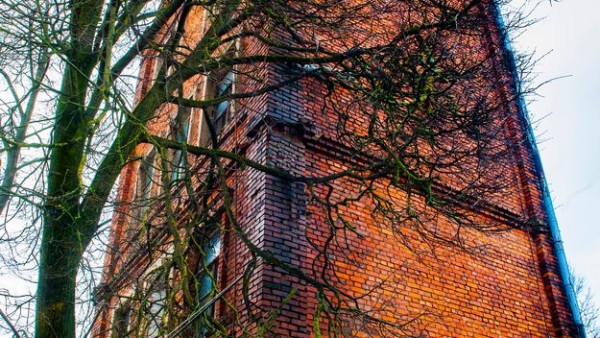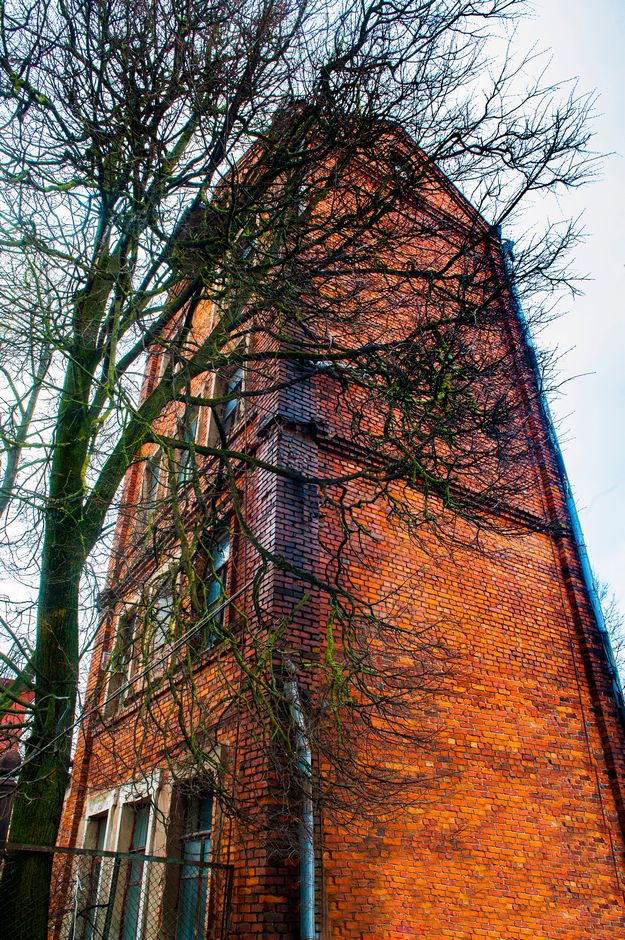Brick based fire, sword, crime fighting

 So-called brick style is spreading in the Russian architecture of the last third part of the XIX century. A simple and practical way of façade making replaces fragile and short-lived plaster.
So-called brick style is spreading in the Russian architecture of the last third part of the XIX century. A simple and practical way of façade making replaces fragile and short-lived plaster.
The rationality of forms, their connection with the material properties determined the nature of the brick buildings style. Mass and cheap construction of hospitals, schools, houses, industrial buildings, barracks conduced its approval. The expressiveness of buildings was reaching by using embossed masonry, and its pattern was allocated by the plasticity and color.
Among the city’s public buildings in Smolensk, brick style can be noticed in prison complex, a complex of the Narva Regiment barracks and fire station complex
Fire station complex: coach — house, watchtower
(Glinki str. 2a, 2b)
Through many centuries fires annoyed the city authorities greatly. One day one of these fires upset the Empress Catherine II, when, during her stay in Smolensk, because of the large number of illumination facilities the sovereign mistress Princess Drutsk-Sokolinskii house burnt.
Perhaps, this was the reason the first Russian fire statute was worked out by native of the Smolensk Governorate, the count A.D. Sheremetev. Under the count’s control, the fire brigade of more than a thousand people acted in the Visokoe estate. Count at his own expense published a magazine «Imperial Gazette of the fire business in Russia.»
And in Smolensk in the XIX century there was a well-thought-out system of fire safety. If in a certain area appeared the smoke, the black balls soared over watchtower, the number of which helped to determine the fire area. The nearest parish churches rang bells. In addition to the fire brigades assigned to each district, there were volunteer fire companies, which consisted from well-known residents. These volunteers were known not only for the ability to put out fires, but also for the musical talent: the available brass bands in the firefighter companies were the adornment of the city holidays.
Perhaps this musicality gives to the brick style architecture of the end XIX — early XX centuries, the fire station complex was built, echoes of classicism.
Nowadays the object of cultural heritage «Fire station complex: coach — house, watchtower» is used for housing..
The barracks complex of Narva regiment 
(Comintern hill 13, 14, 15, 59, 1)
The structures complex, which were specific for the military department construction of the end XIX — early XX centuries, well kept three two-floored barracks housing for lower officers (houses 13, 14, 15) and the one-floored building of the Officer’s Assembly (Club) (house 59).
At the end of XIX century the Russian army regiments were almost entirely placed in specially constructed barracks. The various size buildings were constructed, to accommodate the companies or battalions. Often, for each company was marked out a separate floor, with the rooms near the stairs were non-commissioned officers for better control over the rank and file. Gen. soldiers in the barracks buildings was well thought: well-appointed room, clean bed, comfortable latrines, washing hands. In the dining barracks the rules of hygiene were strictly observed.
Currently, the building complex for the lower officers of the Narva regiment barracks is used for housing.
The prison complex
(Neverovsky str.1, Gagarin ave. 16)
The prison, located in the Neverovsky street, was built in the early XX century in the brick style, has monumental laconic forms inherent to the pre-revolutionary architecture barracks and penal institutions.
The emphasis is made in inputs double wooden doors in the spirit of modernism, which lead into the middle block of the building, that apparently included separate staircases, one for the shutter, the other for the lift, to reduce the probability joint attacks on the guards.
All three floors (which is unusual for this time of the prison building) along the longitudinal axis of the building there is a corridor with large windows at the ends.
The building is currently used for housing, the ground floor is kept for store placing.

